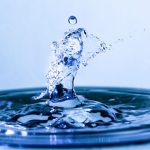Creating surfaces that can clean themselves sounds like something out of a science fiction movie, but thanks to the advancement of photocatalytic sugar coatings, this concept is becoming a reality. These innovative coatings utilize the power of light to break down organic contaminants, offering a sustainable and efficient solution for maintaining clean surfaces in various environments. Let’s delve into the world of photocatalytic sugar coatings and explore how they are revolutionizing the concept of self-cleaning surfaces.
**The Science Behind Photocatalytic Sugar Coatings**
At the heart of photocatalytic sugar coatings is the principle of photocatalysis, a process in which a catalyst is activated by light to accelerate a chemical reaction. In the case of sugar coatings, the catalyst typically used is titanium dioxide (TiO2), a common photocatalyst known for its ability to break down organic compounds. When exposed to light, TiO2 generates reactive oxygen species that can decompose organic contaminants, such as dirt, bacteria, and pollutants, on the surface of the coating.
**Benefits of Self-Cleaning Surfaces**
One of the primary advantages of photocatalytic sugar coatings is their self-cleaning ability. By harnessing the power of light, these coatings can effectively break down and remove organic substances that accumulate on surfaces over time. This not only helps in maintaining a clean and hygienic environment but also reduces the need for frequent manual cleaning, saving time and effort.
Moreover, self-cleaning surfaces coated with photocatalytic sugar coatings offer a sustainable solution for maintaining cleanliness. Unlike traditional cleaning methods that often rely on harsh chemicals and detergents, photocatalytic coatings require only light to activate the cleaning process. This makes them an eco-friendly alternative that contributes to reducing the use of harmful chemicals and minimizing environmental impact.
**Applications of Photocatalytic Sugar Coatings**
The versatility of photocatalytic sugar coatings makes them suitable for a wide range of applications across various industries. In the architectural sector, these coatings can be applied to building facades, windows, and roofs to create self-cleaning surfaces that stay pristine even in urban environments with high pollution levels. In healthcare facilities, photocatalytic coatings can help in maintaining a sterile environment by continuously breaking down bacteria and viruses on surfaces.
Furthermore, the automotive industry can benefit from photocatalytic sugar coatings by integrating them into vehicle paints and coatings. Self-cleaning car surfaces not only enhance the aesthetics of vehicles but also reduce the need for frequent washing, leading to lower water consumption and less environmental impact.
**Future Outlook and Innovations**
As research and development in the field of photocatalytic coatings continue to advance, new innovations are emerging to enhance the effectiveness and durability of self-cleaning surfaces. Scientists are exploring the use of different catalysts and additives to improve the performance of photocatalytic sugar coatings, making them more resistant to wear and prolonging their self-cleaning properties.
Furthermore, advancements in nanotechnology are enabling the development of thin-film coatings that can be applied to a variety of surfaces, including textiles and electronic devices, to create self-cleaning functionalities. These innovations hold great promise for revolutionizing everyday products and surfaces, making them easier to maintain and more sustainable in the long run.
**In Summary**
Photocatalytic sugar coatings represent a groundbreaking technology that is reshaping the concept of self-cleaning surfaces. By harnessing the power of light and catalytic reactions, these coatings offer a sustainable and efficient solution for maintaining cleanliness across various industries. With ongoing research and innovations, the future of self-cleaning surfaces looks bright, promising a cleaner and more sustainable environment for all.





